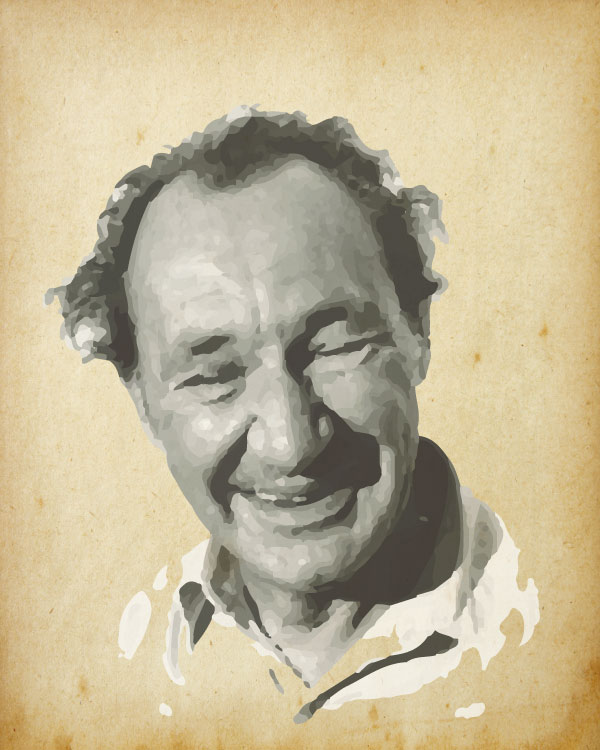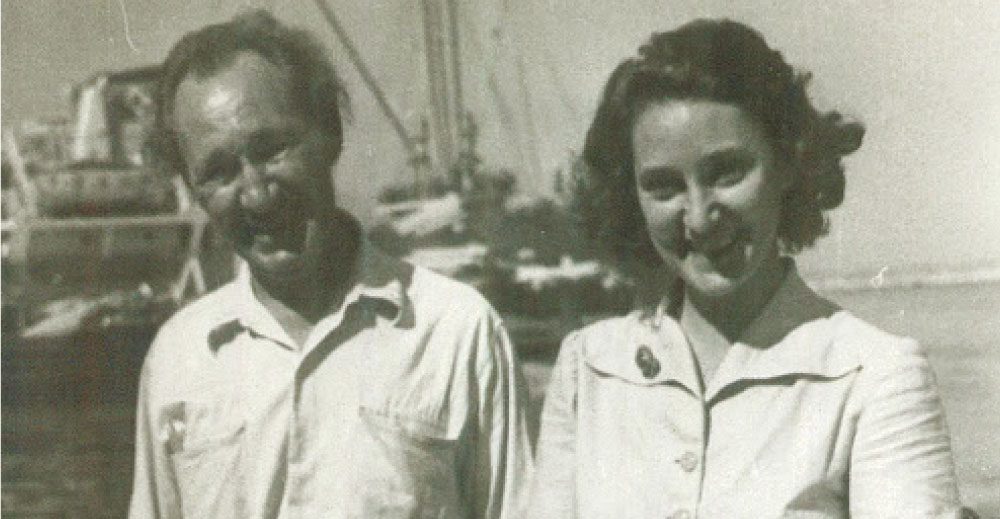Halikarnas Balıkçısı…
Ömrünü Anadolu’nun tanıtımına adamış bir yurt sevdalısı…
CEVAT ŞAKİR KABAAĞAÇLI…
Nam-ı diğer
Halikarnas Balıkçısı…
Biz, onu daha çok edebi kişiliği ile tanıyoruz. Ege ve Akdeniz’in engin maviliğini, yöre insanının dram dolu yaşamını, bölgenin kültürel zenginliğini ve sayısız efsaneleri onun eşsiz anlatımıyla öğrendik.
Edebiyatçı yönünün ötesinde O, aynı zamanda bir ressam, tarihçi, çevirmen, turist rehberi, karikatür-çizgi roman çizeri ve her şeyden önemlisi Anadolu sevdalısı bir yurt sever…
Halikarnas Balıkçısı’nın hikayesi Girit’te 1890 yılının 17 Nisan günü başlamış.
O yıllarda Osmanlı Devleti, dünyadaki milliyetçilik akımının etkisi ile zor zamanlar yaşamakta. Yunanistan’da başlayan ayaklanmalar Girit’e sıçramış. Osmanlı Devleti durumla ilgili önlemler almaya çalışıyor. Babası Kabaağaçlızade Mehmet Şakir Paşa, bu dönemde Girit’te vali olarak görev yapıyor. Köklü bir aileden gelen Halikarnas Balıkçısı’nın yakın akrabaları da devletin önemli kademelerinde görevliler. Amcası, II. Abdülhamid devri sadrazamı Ahmed Cevad Paşa, dedesi, Şurayı Askeri Dairesi Reisi Miralay Mustafa Asım Bey.
Annesi Sare İsmet hanım, doğumdan sonra sıra isim koymaya gelince “Rüyamda Musa Peygamberi gördüm. Oğlumun adını Musa koyucağım” dese de, amca Sadrazam Cevat Paşa ile babası Mehmet Şakir Paşa’nın isimleri de listeye eklenir ve bebeğe Musa Cevat Şakir adını verirler.
Çocukluğu babasının görevinden dolayı Atina ve Büyükada’da geçer. Ortaöğrenimini Robert Koleji’nde tamamlar. Sanatçı bir aileden gelen Musa Cevat Şakir’in yazıları daha lise yıllarında dönemin önemli gazetelerinden İkdam’da yayımlanmaya başlar.

Ömrünü Anadolu’nun tanıtımına adamış bir yurt sevdalısı…
His childhood was in Athens and Büyükada due to his father’s duty. He completed his secondary education at Robert College. Coming from an artistic family, the articles of Musa Cevat Şakir started to be published in Ikdam, one of the important newspapers of the period, even in high school years.
Kabaağaçlı studied Modern History at Oxford University. He studied at the Academy of Fine Arts in Rome. He got married in Italy in 1913. When he returned to Istanbul, he began to write articles for newspapers and magazines. In 1925, his life changed because of an article. He was exiled to Bodrum because he was found guilty of his article. Completing half of his sentence in Bodrum and the rest in Istanbul, Kabaağaçlı lives in Bodrum, where he loved its nature and people for 25 years.

His arrival in the region would change the fate of Bodrum, a small coastal town, and even the Aegean Region. Because Cevat Şakir Kabaağaçlı was a country lover who had made great contributions to the promotion of Anatolia.
This love of him actually begins during his studies at Oxford. Meanwhile, Cevat Şakir traveled to many European countries and studies their cultures. He is fluent in Arabic, Persian, English, French, Italian, German, Spanish, old and new Greek. Thus, he read and interpreted the works in Western Culture. Examines the Anatolian civilizations. As a result of all these, he made a synthesis. He concluded that Anatolia contributed to the formation of the Hellenistic civilization by acting as a bridge to the civilizations of Asia Minor and Mesopotamia, thus the foundation of Western civilization was laid in Anatolian lands. According to him, there was no such thing as a Greek miracle, and whatever was the first related to humanity came from Anatolia. Kabaağaçlı became the pioneer of “Blue Anatolianism” – Blue Humanism.
According to Cevat Şakir, it was important to know and learn the past. He wrote articles on the subject. But more had to be done. Everyone should see the cultural richness of Anatolia. With this in mind, he became to be one of the tourist guides of the country who had the T.R. nationality.
Halikarnas Balıkçıcı, known as the Sage of the guides, was assigned to entertain the state guests and to promote the cultural and historical riches of the country. One of them was the Iranian Emperor Şehinşah Pehlevi, who came to visit the country in 1934. He guided him in the ancient cities of Izmir, Ephesus and Bergama. President Mustafa Kemal Atatürk accompanied them to Izmir.
Apart from his articles on this subject, Kabaağaçlı, who also drew sightseeing routes, became a cultural pioneer for Turkish tourism, promoting the development of tourism by introducing Bodrum and the Aegean Region.
The concept of Blue Voyage was brought to us by Halikarnas Balıkçısı. The Blue Anatolian philosophy is the beginning of the blue voyage. Cevat Şakir Kabaağaçlı and the intellectuals who defended this opinion complained that the cultural heritage was not known by the public. In the summer of 1945, a few writers and artists sailed for this purpose by renting a boat. Sabahattin Eyüboğlu called the trip Blue Voyage.
Cevat Şakir Kabaağaçlı, who made many researches and wrote articles on the culture, nature and history of our country and devoted his life to the promotion of Anatolia, was given the “State Culture Gift” by the Ministry of Culture and Tourism in 1971.
Halikarnas Balıkçısı continued to write until the end of his life by taking the pencil in his right hand and pushing it with his left hand. Before he died he told to his adoptive son Şadan Gökovalı; “Well our boat started to get water … I want to be buried in Bodrum…. I don’t like gaudiness, it is not necesserily to be buried in hills or places overlooking the sea. After all, I cannot watch the sea from where I lie down, I always see the sea in my soul, with the eyes of my heart. “
His last words were “I can smell. The fragrance of flowers… ”and he left this stage called world on October 13, 1973.
The eternal resting place of Halikarnas Balıkçısı is in Gümbet Mahallesi, Gönül Tepesi, in Bodrum, where he was sent to exile and loved.
Rest in peace…
Kabaağaçlı, Oxford Üniversitesi’nde Yakın Çağlar Tarihi okur. Roma’da Güzel Sanatlar Akademisinde eğitim görür. 1913’te İtalya’da evlenir. İstanbul’a döndüğünde gazete ve dergilerde yazılar yazmaya başlar. 1925 yılında ise bir yazısı yüzünden hayatı değişir. Makalesinden dolayı suçlu bulunduğu için Bodrum’a sürgün edilir. Cezasının yarısını Bodrum’da geri kalanının da İstanbul’da tamamlayan Kabaağaçlı, doğasına ve insanlarına gönül verdiği Bodrum’da 25 yıl yaşar.
Onun yöreye gelişi, ufak bir sahil kasabası olan Bodrum’un hatta Ege Bölgesi’nin kaderini değiştirecektir. Zira, Cevat Şakir Kabaağaçlı, Anadolu’nun tanıtılmasında büyük katkıları olan bir memleket sevdalısıdır.
Onun bu sevdası, aslında Oxford’daki öğrenimi sırasında başlar. Cevat Şakir, o esnada pek çok Avrupa ülkesini gezer, kültürlerini inceler. Arapça, Farsça, İngilizce, Fransızca, İtalyanca, Almanca, İspanyolca, eski ve yeni Yunanca’yı iyi derecede bilmektedir. Böylece Batı Kültüründeki eserleri okuyup yorumlar. Anadolu uygarlıklarını inceler. Tüm bunların sonucunda, bir senteze varır. Anadolu’nun, Önasya ve Mezopotamya uygarlıklarına köprü görevi görerek Helen uygarlığının oluşumuna katkı sağladığı, dolayısıyla Batı uygarlığının temelinin Anadolu topraklarında atıldığı sonucuna varır. Ona göre, Yunan mucizesi diye bir şey yoktur ve insanlığa ait ilk olan ne varsa Anadolu’dan çıkmıştır. Kabaağaçlı,“Mavi Anadoluculuk” -Mavi Hümanizma- akımının öncüsü olur.

Cevat Şakir’e göre geçmişi bilmek ve öğrenmek önemlidir. Kendisi konuyla ilgili yazılar yazar. Fakat daha fazla şey yapılmalıdır. Herkes Anadolu’nun kültürel zenginliğini görmelidir. Bu düşünceyle ülkenin ilk T.C. uyruklu turist rehberlerinden biri olur.
Rehberlerin Piri olarak anılan Halikarnas Balıkçısı, devlet konuklarının ağırlanması ve ülkenin kültürel ve tarihi zenginliklerinin tanıtımında görevlendirilir. Bunlardan biri de 1934 yılında ülkeyi ziyarete gelen İran İmparatoru Şehinşah Pehlevidir. Kendisine İzmir, Efes, Bergama antik kentlerinde rehberlik yapar. Cumhurbaşkanı Mustafa Kemal Atatürk, onlara İzmir’e kadar eşlik eder.
Bu konuda yazdığı yazıların dışında, gezi rotaları da çizen Kabaağaçlı, Türk turizmi için kültür öncüsü olmuş, Bodrum ve Ege Bölgesi’ni tanıtarak turizmin gelişimini sağlamıştır.
Mavi Yolculuk kavramını da bizlere Halikarnas Balıkçısı kazandırmıştır. Mavi Anadoluculuk felsefesi, mavi yolculuğun da başlangıcını oluşturur. Cevat Şakir Kabaağaçlı ve bu görüşü savunan aydınlar, kültürel mirası halkın bilinmemesinden yakınırlar. 1945 yazında yazar ve sanatçılardan birkaç kişi bu amaçla tekne kiralayarak denize açılırlar. İçlerinden Sabahattin Eyüboğlu geziye Mavi Yolculuk ismini verir.
Ülkemizin kültürü, doğası ve tarihi ile ilgili pek çok araştırma yapıp yazılar yazan ve ömrünü Anadolu’nun tanıtılmasına adayan Cevat Şakir Kabaağaçlı’ya Kültür ve Turizm Bakanlığınca 1971 yılında “Devlet Kültür Armağanı” verilir.
Ülkemizin kültürü, doğası ve tarihi ile ilgili pek çok araştırma yapıp yazılar yazan ve ömrünü Anadolu’nun tanıtılmasına adayan Cevat Şakir Kabaağaçlı’ya Kültür ve Turizm Bakanlığınca 1971 yılında “Devlet Kültür Armağanı” verilir.
Halikarnas Balıkçısı kalemi sağ eline alıp sol eliyle ittirerek ömrünün sonuna dek yazmaya devam eder. Ölümüne yakın manevi oğlu Şadan Gökovalı’ya şunları söyler “Eh bizim tekne su almaya başladı… Bodrum’a gömülmek istiyorum…. Şatafatı da sevmem, tepelere, deniz gören yerlere gömülmem şart değil. Nasıl olsa yattığım yerden denizi seyredemem, denizi ruhumda yaşatıyor gönül gözüyle her zaman görüyorum.”
Son sözleri “Koku duyuyorum. Çiçek kokusu…” olur ve 13 Ekim 1973 günü dünya denen bu sahneden ayrılır.
Halikarnas Balıkçısı’nın ebedi istirahatgahı sürgüne gönderilip sevdalandığı Bodrum’un Gümbet Mahallesi Gönül Tepesi’ndedir.
Huzur içinde uyusun…
A country lover who devoted his life to the promotion of Anatolia …
Cevat Şakir Kabaağaçlı…
Also known as Halikarnas Balıkçısı
(Fisherman of Halicarnassus) …
We know him mainly with his literary personality. Thanks to his unique expressions we learned about the deep blue of the Aegean and the Mediterranean, the drama-filled life of the local people, the cultural richness of the region and numerous legends.
Beyond his literary side, he was also a painter, historian, translator, tourist guide, cartoon-comic artist, and above all, an Anatolian lover patriot.
The story of Halikarnas Balıkçısı began on April 17, 1890 in Crete.
In those years, the Ottoman Empire was experiencing a difficult time with the influence of the nationalist movement in the world. The uprisings that started in Greece spread to Crete. The Ottoman State was trying to take measures regarding the situation. His father, Kabaağaçlızade Mehmet Şakir Pasha, was the governor of Crete during this period. The close relatives of the Halikarnas Balıkçısı, who comes from a long-established family, were also in charge of important levels of the state. His uncle, II. Ahmed Cevad Pasha, was grand vizier of the Abdulhamid era, grandfather, Colonel Mustafa Asım Bey, Head of the Council of Military Department.
Although her mother, Mrs. Sare Ismet, when it comes to naming after birth, said, “I saw the Prophet Moses in my dream. I will name my son Musa”, the names of his uncle, Grand Vizier Cevat Pasha and his father Mehmet Şakir Pasha were added to the list and the baby was given the names the baby Musa Cevat Şakir.

A country lover who devoted his life to the promotion of Anatolia …
His childhood was in Athens and Büyükada due to his father’s duty. He completed his secondary education at Robert College. Coming from an artistic family, the articles of Musa Cevat Şakir started to be published in Ikdam, one of the important newspapers of the period, even in high school years.
Kabaağaçlı studied Modern History at Oxford University. He studied at the Academy of Fine Arts in Rome. He got married in Italy in 1913. When he returned to Istanbul, he began to write articles for newspapers and magazines. In 1925, his life changed because of an article. He was exiled to Bodrum because he was found guilty of his article. Completing half of his sentence in Bodrum and the rest in Istanbul, Kabaağaçlı lives in Bodrum, where he loved its nature and people for 25 years.

His arrival in the region would change the fate of Bodrum, a small coastal town, and even the Aegean Region. Because Cevat Şakir Kabaağaçlı was a country lover who had made great contributions to the promotion of Anatolia.
This love of him actually begins during his studies at Oxford. Meanwhile, Cevat Şakir traveled to many European countries and studies their cultures. He is fluent in Arabic, Persian, English, French, Italian, German, Spanish, old and new Greek. Thus, he read and interpreted the works in Western Culture. Examines the Anatolian civilizations. As a result of all these, he made a synthesis. He concluded that Anatolia contributed to the formation of the Hellenistic civilization by acting as a bridge to the civilizations of Asia Minor and Mesopotamia, thus the foundation of Western civilization was laid in Anatolian lands. According to him, there was no such thing as a Greek miracle, and whatever was the first related to humanity came from Anatolia. Kabaağaçlı became the pioneer of “Blue Anatolianism” – Blue Humanism.
According to Cevat Şakir, it was important to know and learn the past. He wrote articles on the subject. But more had to be done. Everyone should see the cultural richness of Anatolia. With this in mind, he became to be one of the tourist guides of the country who had the T.R. nationality.
Halikarnas Balıkçıcı, known as the Sage of the guides, was assigned to entertain the state guests and to promote the cultural and historical riches of the country. One of them was the Iranian Emperor Şehinşah Pehlevi, who came to visit the country in 1934. He guided him in the ancient cities of Izmir, Ephesus and Bergama. President Mustafa Kemal Atatürk accompanied them to Izmir.
Apart from his articles on this subject, Kabaağaçlı, who also drew sightseeing routes, became a cultural pioneer for Turkish tourism, promoting the development of tourism by introducing Bodrum and the Aegean Region.
The concept of Blue Voyage was brought to us by Halikarnas Balıkçısı. The Blue Anatolian philosophy is the beginning of the blue voyage. Cevat Şakir Kabaağaçlı and the intellectuals who defended this opinion complained that the cultural heritage was not known by the public. In the summer of 1945, a few writers and artists sailed for this purpose by renting a boat. Sabahattin Eyüboğlu called the trip Blue Voyage.
Cevat Şakir Kabaağaçlı, who made many researches and wrote articles on the culture, nature and history of our country and devoted his life to the promotion of Anatolia, was given the “State Culture Gift” by the Ministry of Culture and Tourism in 1971.
Halikarnas Balıkçısı continued to write until the end of his life by taking the pencil in his right hand and pushing it with his left hand. Before he died he told to his adoptive son Şadan Gökovalı; “Well our boat started to get water … I want to be buried in Bodrum…. I don’t like gaudiness, it is not necesserily to be buried in hills or places overlooking the sea. After all, I cannot watch the sea from where I lie down, I always see the sea in my soul, with the eyes of my heart. “
His last words were “I can smell. The fragrance of flowers… ”and he left this stage called world on October 13, 1973.
The eternal resting place of Halikarnas Balıkçısı is in Gümbet Mahallesi, Gönül Tepesi, in Bodrum, where he was sent to exile and loved.
Rest in peace…






